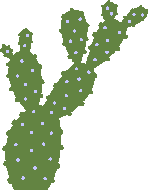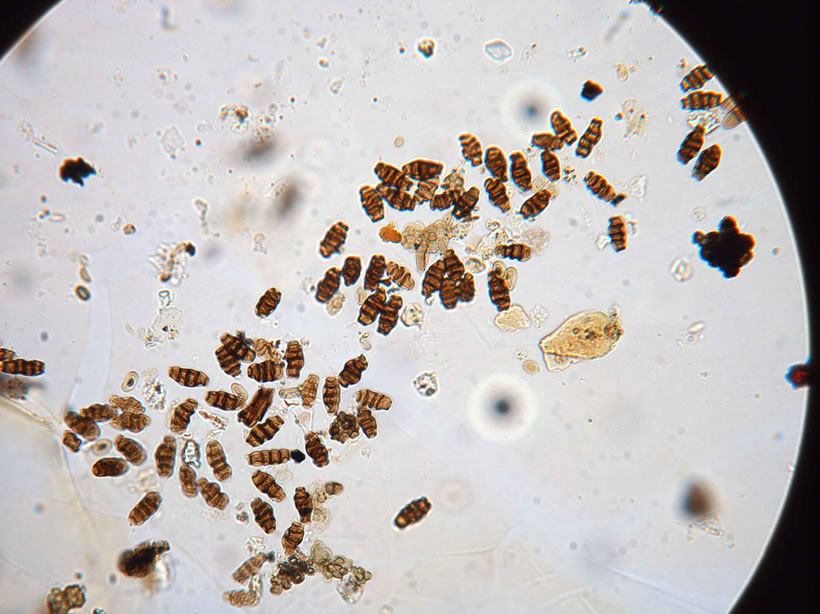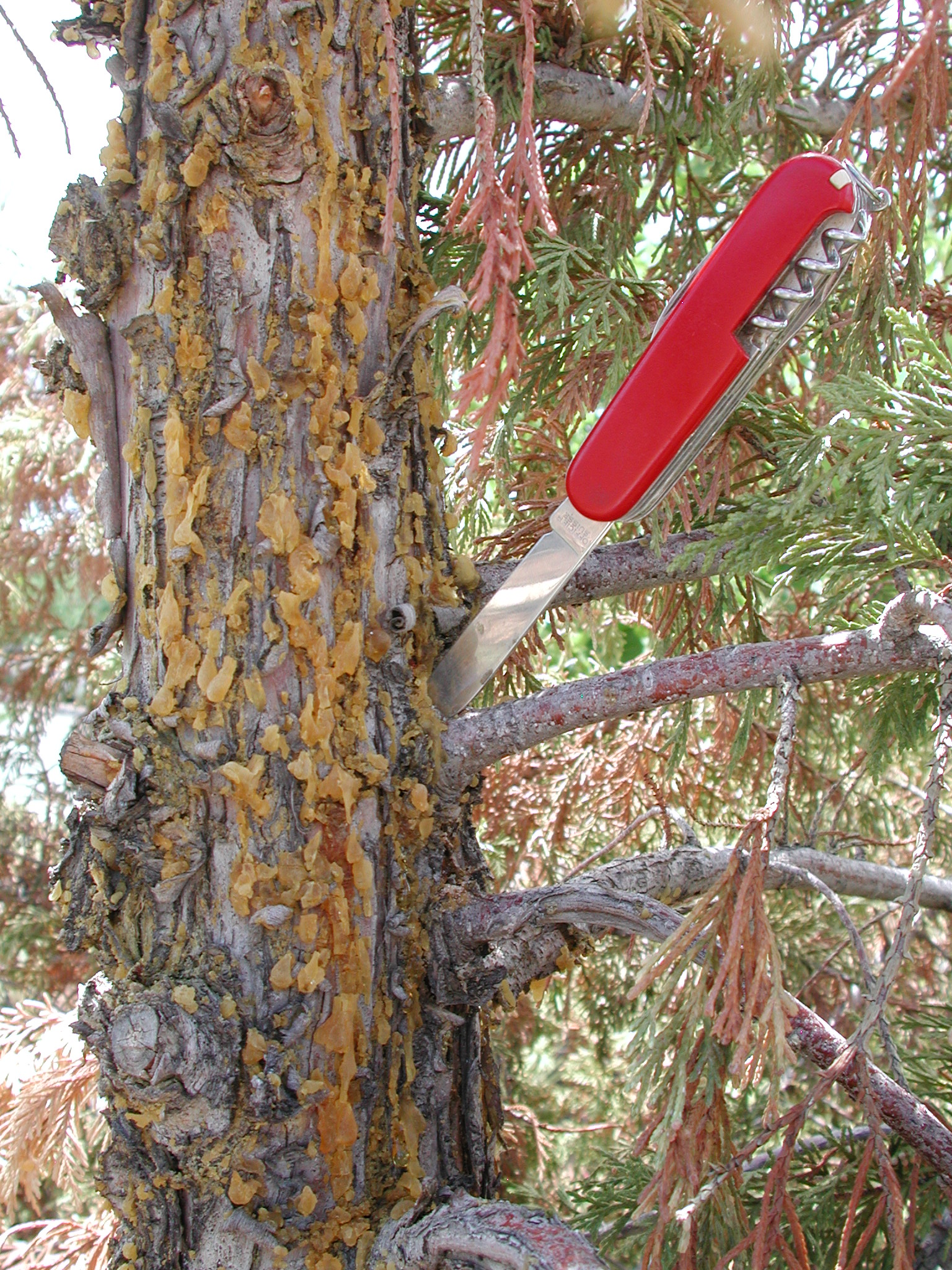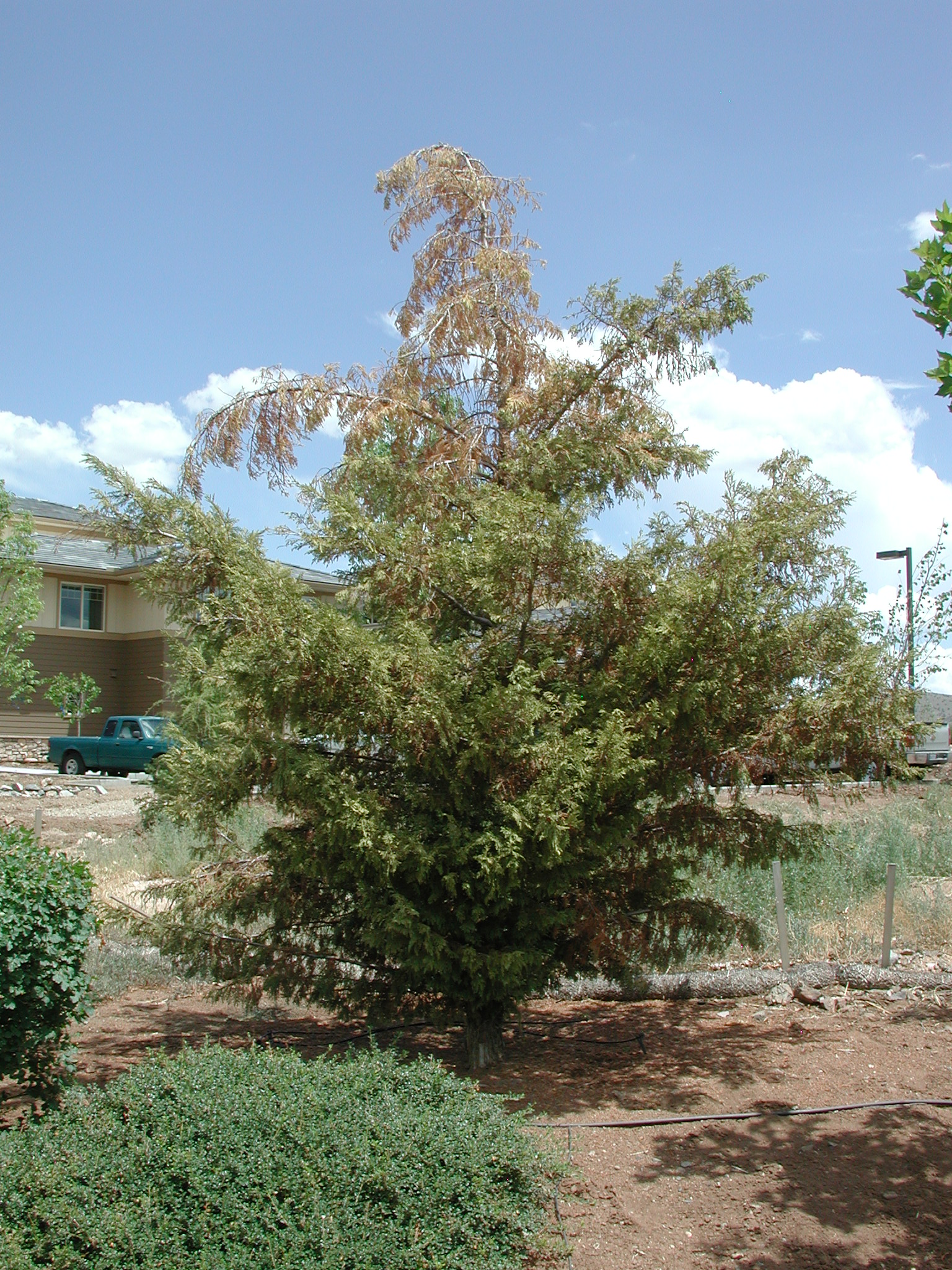 Disease Confirmed on Leyland Cypress - August 10, 2011 Jeff Schalau, Agent, Agriculture & Natural Resources University of Arizona Cooperative Extension, Yavapai County For several years, we have seen branch dieback and tree decline on Leyland cypress (Cupressocyparis leylandii) in Yavapai County. This has occurred mostly in the Prescott area. In some cases, large commercial plantings have been severely impacted. The fungal disease, Seiridium canker, had been suspected but not confirmed. Two weeks ago, we sampled several affected trees and shipped the material overnight to Dr. Steve Koike with University of California Cooperative Extension in Monterey County (where Seridium canker has been known to exist since the 1920’s). By the next day, Steve confirmed the presence of Seiridium. Now that we know the pathogen is known to occur here, we have to consider the risk to the thousands of Leyland cypresses planted here. Seiridium cardinale is the predominant disease species found in California. Two other species of Seiridium are also present in North America (S. cupressi is found in Florida and S. unicorne is found in the southeastern U.S.). We have not yet identified the species of Seiridium in our samples, but it is likely that it is S. cardinale. Seiridium also infects Italian cypress and has had widespread impacts in the Mediterranean region. The pathogen is identified by sampling areas where cankers are visible. Here, fruiting bodies (pycnidia) emerge from the canker and produce fruiting structures called conidia. These have a characteristic appearance when viewed under a compound microscope and are diagnostic for the disease (photos of symptoms and conidia found in Prescott are shown in photos below). The symptoms of Seiridium canker most often appear as “flagging”: individual branches fading from green to yellow to reddish-brown due to girdling cankers on or at the base of branches. Infection may affect a single branch or multiple branches throughout the tree and mortality of the entire tree is common. The scientific literature often shows oval cankers that are sunken and reddish with resin exuding from the margins, especially on new, rapidly expanding cankers. While symptoms were similar, the cankers we observed on Leyland cypress in Prescott did not have the same appearance as those found in the scientific literature. The cankers were less distinct and rarely appeared sunken or wet. In addition, infected trees ooze yellow sap from large areas on the trunk. This initially led to speculation that the damage observed may have been from environmental stresses such as improper irrigation (too little and poor placement), poor planting/staking, and overly dense plantings. Indeed, these factors could compound the Leyland cypress’ susceptibility to the disease and are often found when plants are in decline. When losses started mounting in a Prescott area subdivision, the landscape maintenance company called me and we sampled the affected trees. We sent them to Steve Koike because he works in Monterey County where Seiridium canker regularly infects Monterey cypress (Leyland cypress is an interspecific hybrid between Monterey cypress and Alaska yellow cedar). The disease infection cycle can begin with wounds made by insects, hail, snow breakage, or mechanical injury. Nursery stock can also be infected. Once infected, the fungus overwinters in colonized bark and old cankers during winter and dry weather. The fruiting bodies and spores are produced during wet weather. Management options for Seiridium canker are limited. Individual high-value trees may be protected by fungicides and pruning out individual infected branches might prolong survival of susceptible trees. However, planting resistant species or varieties is the only realistic option for long-term disease control. If you have Leyland cypress and they are not showing symptoms of Seiridium canker, then reducing plant stress factors such as maintaining adequate irrigation, planting in full sun, and giving them adequate growing space will increase plant vigor and, hopefully, keep them alive. Also, sanitizing pruning tools between cuts will minimize the potential for spreading this disease. Since we have confirmed the presence of Seiridium canker in northern Arizona, I would not encourage the future planting of Leyland cypress in known areas of infection (Prescott). Italian cypress (Cupressus sempervirens) is also highly susceptible. It is thought that Arizona cypress (Cupressus arizonica) and juniper trees (Juniperus spp.) are less susceptible to Seiridium canker and would be suitable substitutes for Leyland cypress in residential and commercial landscapes. Follow the Backyard Gardener on Twitter – use the link on the BYG website. If you have other gardening questions, call the Master Gardener line in the Camp Verde office at 928-554-8999 Ext. 3 or e-mail us at cottonwoodmg@yahoo.com and be sure to include your name, address and phone number. Find past Backyard Gardener columns or provide feedback at the Backyard Gardener web site: http://cals.arizona.edu/yavapai/anr/hort/byg/.  Seiridium conidia (photo by Steve Koike).  Seiridium canker on branch of Leyland cypress (photo by Jeff Schalau).  Sap exuding from trunk on Seiridium canker infected tree (photo by Jeff Schalau).  Young tree infected with Seridium canker (photo by Jeff Schalau). |